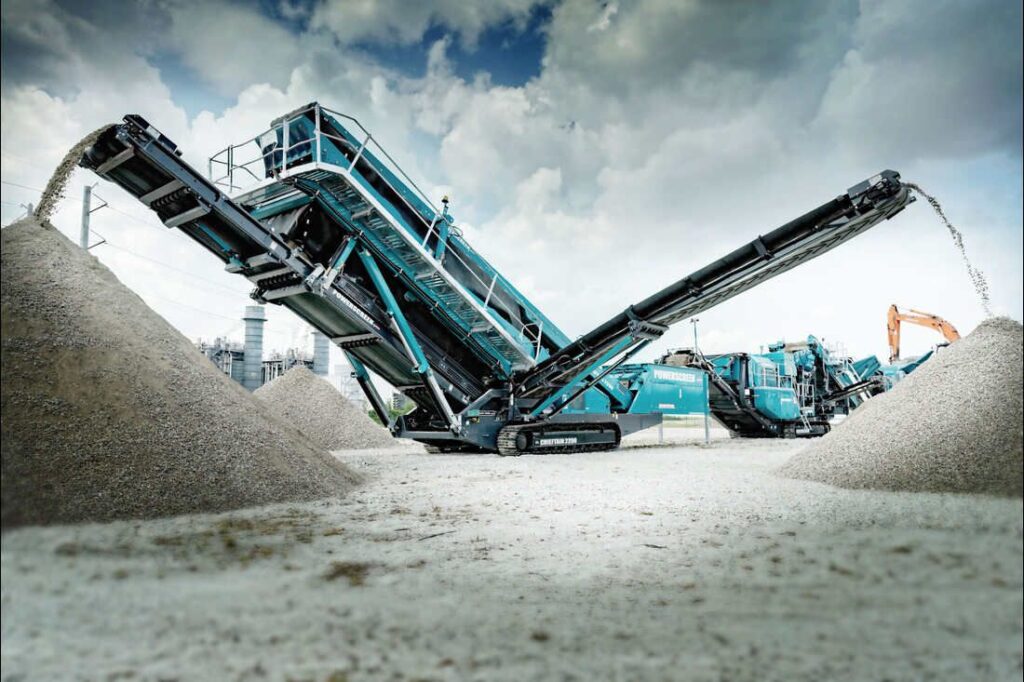Mobile Crushers
Home > Products
Mobile Crushers
Mobile Crushers are track-mounted or wheel-mounted crushing units designed to process raw materials directly at the worksite. They integrate feeding, crushing, and conveying into one mobile system, eliminating the need for separate equipment and reducing material handling time. These machines are ideal for on-site crushing of rock, ore, construction debris, concrete, and asphalt, making them highly efficient for mining, quarrying, demolition, and recycling applications.
By enabling material processing close to the extraction or demolition site, mobile crushers reduce transportation costs, improve productivity, and allow for rapid deployment in multiple locations.

Working Principle
Mobile crushers function by feeding material into the crusher (e.g., jaw, cone, or impact) where it is crushed and screened. The output material is then either stockpiled or conveyed to the next processing stage.
They typically include:
- Feeder
- Crusher (Jaw/Cone/Impact)
- Conveyor belts
- Screen (for sizing)
- Engine (diesel or electric)
- Track or wheel system
Construction & Components
Mobile crushers consist of several main components:
Feeder System – Vibrating or apron feeders that regulate the flow of raw material into the crusher.
Crusher Unit – Can be a Jaw Crusher (primary), Cone Crusher (secondary/tertiary), or Impact Crusher (for shaping & recycling).
Screening Unit (optional) – Separates materials into different size fractions.
Conveyor System – Transfers crushed material to stockpiles or other processing equipment.
Chassis & Tracks/Wheels – Provides mobility across job sites.
Engine & Power System – Diesel or electric power, sometimes hybrid, for efficient operation.
Control & Monitoring System – Advanced automation, hydraulic controls, telematics, and remote monitoring capabilities.
Dust Suppression System – Sprayers and filters to reduce airborne dust during crushing.
Types of Mobile Crushers
Jaw Mobile Crushers – Best for primary crushing of large feed sizes.
Cone Mobile Crushers – Ideal for secondary or tertiary crushing with precise particle shape control.
Impact Mobile Crushers – Suitable for recycling concrete/asphalt and producing high-quality aggregates.
Screening Mobile Units – Combine crushing and screening for full material processing.
Hybrid/Electric Mobile Crushers – Energy-efficient options with reduced emissions.
Key Features
Mobility & Flexibility – Can be moved between job sites quickly.
Rapid Setup & Operation – Minimal site preparation required.
Versatility – Handles a wide range of materials and crushing applications.
High Productivity – Integrated systems streamline material flow.
Environmental Compliance – Dust suppression and low-noise operation.
Fuel Efficiency – Modern engines and power systems optimize fuel consumption.
Safety Features – Emergency stop controls, guarding, and remote operation capability.
Applications
Mining & Quarrying – On-site crushing of ore and stone.
Construction & Infrastructure – Producing aggregates for roads, bridges, and buildings.
Demolition & Recycling – Processing concrete, asphalt, bricks, and glass.
Aggregate Production – Meeting specific size and shape requirements for different projects.
Industrial Applications – Crushing slag, refractory materials, and other industrial by-products.
Comprehensive Range of Spare Parts for All Types of Crushers
1. Jaw Crusher Spare Parts
- Jaw Plates (Fixed & Swing) – Wear plates that crush material.
- Cheek Plates / Side Liners – Protect the crusher frame from wear.
- Toggles & Toggle Seats – Transfer crushing force and allow for jaw movement.
- Pitman Assembly – Main moving component holding the swing jaw.
- Eccentric Shaft – Provides motion to the pitman.
- Flywheels – Store rotational energy and maintain crushing momentum.
- Bearings & Bushings – Reduce friction and support moving parts.
- Wedges & Bolts – Secure jaw plates in position.
- Adjustment Shims – Used to change the jaw crusher output size.
- Feed Chutes & Guards – Guide material into the crusher safely.
2. Cone Crusher Spare Parts
Mantle – The moving wear part that crushes material against the concave.
Concave / Bowl Liners – Stationary wear parts lining the crushing chamber.
Main Shaft – Central vertical shaft carrying the mantle.
Head Assembly – Top part holding the mantle in position.
Eccentric Assembly – Generates crushing motion.
Socket Liner – Protects the socket from wear.
Countershaft & Gear Set – Transmit drive power.
Thrust Bearings – Support axial loads.
Dust Seal – Prevents dust from entering the crusher.
Hydraulic System Components – Cylinders, accumulators, and relief valves.
3. Impact Crusher Spare Parts
Blow Bars / Hammers – Strike and break material.
Impact Plates / Breaker Plates – Stationary wear surfaces.
Rotor Assembly – Rotating element carrying blow bars.
Wear Liners – Protect housing from material impact.
Aprons & Adjustment Devices – Control material output size.
Bearings – Reduce friction and enable rotor rotation.
Feed Chute Liners – Protect feed opening from wear.
Clamping Bars – Hold blow bars in place.
4. Gyratory Crusher Spare Parts
Mantle – Moving part that crushes ore against the concave.
Concaves / Shell Segments – Stationary liners for crushing chamber.
Spider Cap – Protects the spider from falling material.
Spider Arm Liners – Wear parts for spider arms.
Main Shaft & Head Nut – Central crushing element.
Eccentric Assembly – Generates motion for crushing.
Pinions & Gears – Drive transmission components.
Dust Seal Rings – Prevent dust contamination.
Bottom Shell & Bushings – Support and house the eccentric assembly.
5. Mobile Crusher Spare Parts
(Specific to mobile units, in addition to the above crusher type parts)
Crawler Tracks / Track Pads – Enable movement of the mobile crusher.
Hydraulic Pumps & Motors – Control travel and crusher functions.
Conveyor Belts & Rollers – Move crushed material.
Feed Hoppers & Skirting – Guide material into the crusher.
Engine Parts – Diesel engine filters, injectors, turbochargers.
Electrical Components – Control panels, sensors, switches.
Wear Protection Panels – Protect mobile frame from damage.
Vibrating Feeder Components – Motors, springs, wear plates.

